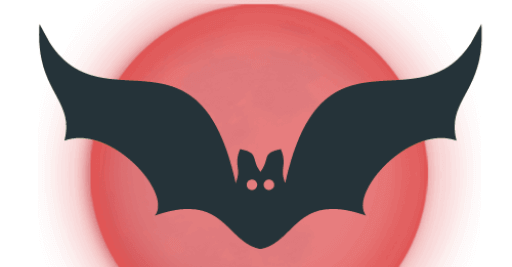The Dragon Project: Stone Circle Energy
Unknown energy, or New Age Woo?

Pentre Ifan, Sir Benfro, Wales by Phil Dolby on Flickr (Creative Commons)
The Dragon Project: Part Two
In Part One of my piece on The Dragon Project, we heard how Paul Devereux and friends set up the Dragon Project in the late 1970s to investigate rumors that the ancient stone circles of Britain gave off weird energies.
For ten years between 1977 and 1987, researchers from various backgrounds used Geiger counters, ultrasound detectors, magnetometers, and other tech at several stone circles. Opinions about the results of the research were ultimately divided.
Paul Devereux, in his book Places of Power (1990), concluded that the circles did not give off any energy other than that which would be expected from geology, e.g. radioactive or geomagnetic rocks.
However, Don Robins, another member of the team, did believe that the circles gave off weird earth energy. Robins’s account of the story is published in his book Circles of Silence (1985).
One of Robins’s more interesting findings was that radiation levels were significantly lower within stone circles — as if they formed a kind of shield.
Tom Graves, a writer on earth energy, described the stone circles as ‘needles of stone’. He likened them to acupuncture needles, piercing the skin of the earth at particular energy points. You can download his book Needles of Stone here for free. Graves says the circles can send out pulses of energy strong enough to give a migraine to ‘anyone who gets in their way.’
Rodney Hale, David Webb, and Busty Taylor found the opposite result regarding ionizing radiation. Contrary to what the Dragon Project found, this team found far higher levels of radiation inside the circles at Stonehenge, Avebury, and the Rollright Stones. They postulated that the ancestors were somehow harvesting the radiation. They also noted that there are strange and mysterious manifestations of light at the Rollright Stones and occasionally at the Cursus Monument near Stonehenge.
Don Robins and The Circles of Silence
Don Robins’s book tells how he and a small group of scientists assembled at the Rollright Stones in Oxfordshire one misty morning in 1978. The Rollright Stones are said to be a king and his warriors turned to stone by witchcraft.
The researchers held Geiger counters and Ultrasonic detectors and throughout that year, they recorded abnormal pulsings that fluctuated spectacularly with the changing seasons. There was a background ultrasound as you might expect, and the Rollrights overlie a geological fault, so perhaps the noise comes from deep within the earth.
But on the Summer and Winter solstices, sacred times for ancient peoples the world over, the ultrasound fell eerily silent: there was no ultrasound, it was as if the stones waited for the sun to move and the world to turn. This finding was totally unexpected but led to Robins titling his book: Circles of Silence.
As the book then goes on to say:
The mystery of the stone circles, far from coming closer to solution, had merely deepened and provoked a flood of new questions. Was Stone Age man aware of the pulsating energy, either by a sensitivity we have lost, or through some method of dowsing? Did he use it for some ancient ritual, as the alignments of the stones would suggest? Above all, what causes the pulsing and its seasonal variations?
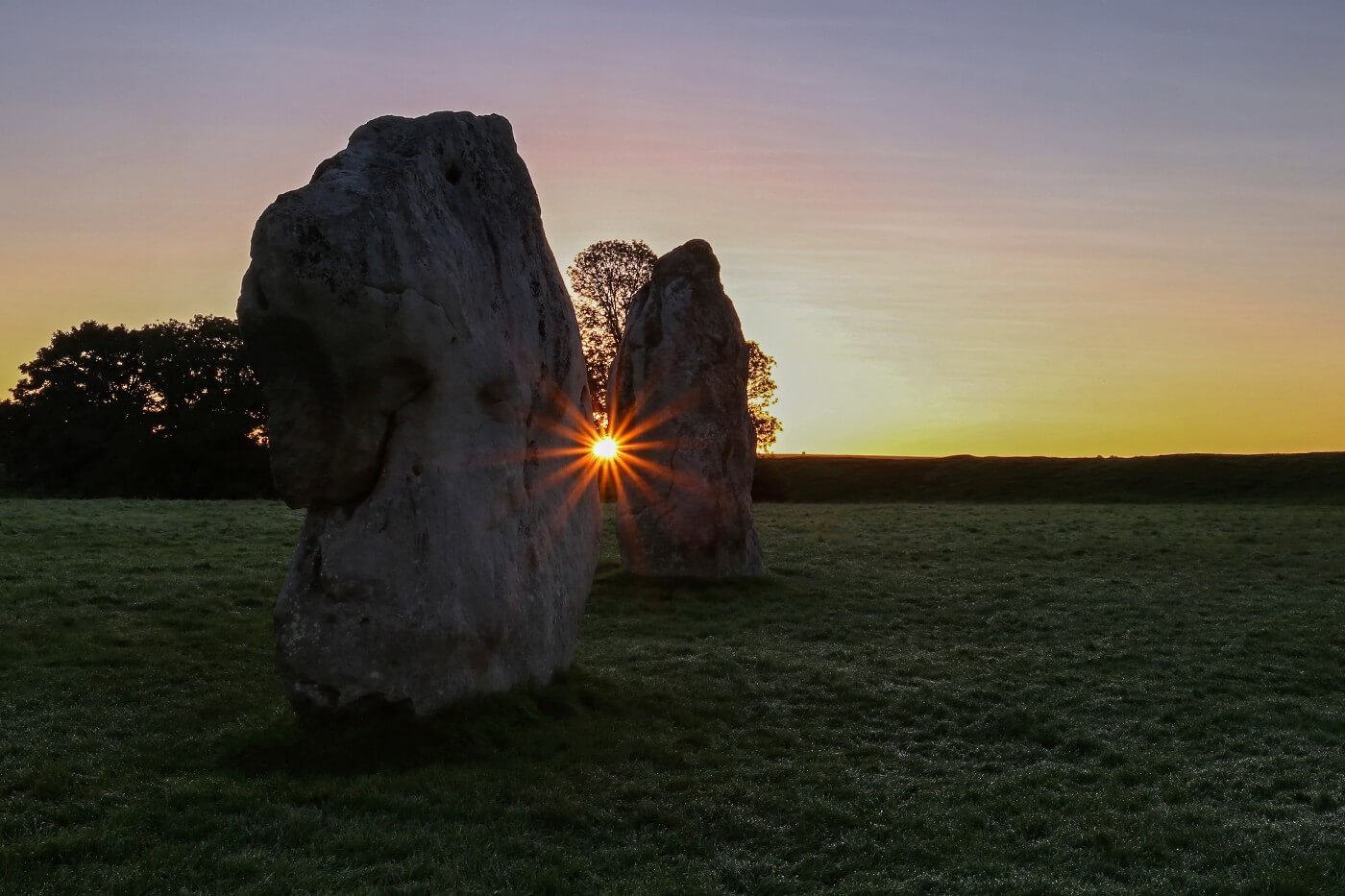
Neolithic Sunrise by Pedro. on Flickr (Creative Commons)
Ancient Sites Dreamwork Project
From 1990, the Dragon Project moved from monitoring known energy types to studying the impact that the stone circles had on the minds of those who visited them.
One way they did this was through dream monitoring. The Dragon Project brought in Dr. Stanley Krippner from the Saybrook University in San Francisco to supervise this segment of the research. Saybrook is a distance-learning institute and offers masters and doctoral degrees in psychology and other humanistic sciences and lays emphasis on ethics and the development of human consciousness.
There were thirty-five volunteers involved in the Dreamwork Project, and the dream working produced two hundred and six dreams which were sifted through and coded according to the Strauch Scale. The Strauch Scale is an inventory used to try to identify unusual features in dreams.
A hundred and three dreams were recorded from the sacred sites and compared with a hundred and three dreams recorded while sleeping at home. Forty-six of the site dreams were noted to be significant, against only thirty-one of the home dreams.
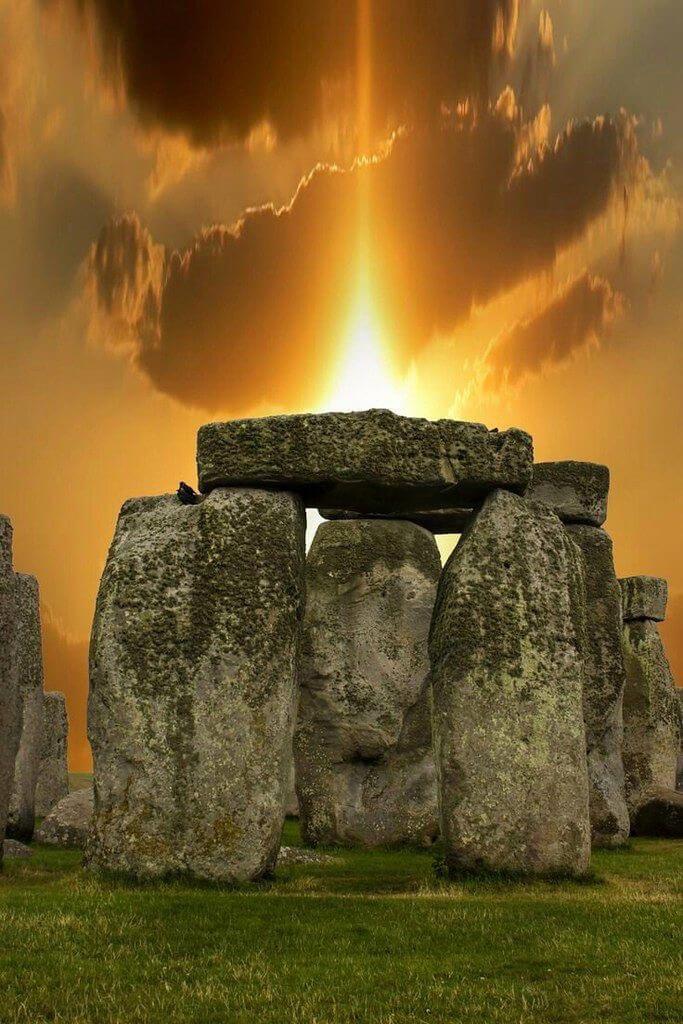
Stonehenge by Slava Kushvalieva on Flickr (Creative Commons)
The Dragon Project selected four neolithic sites, one in Wales and the other three in Cornwall. The Welsh site was Carn Ingli in the Preseli Mountains in West Wales, which is reputed to be a holy hill.
People say that Carn Ingli means the Cairn of the Angels. There is a big Iron Age hillfort on Carn Ingli, with some traces of Bronze Age occupation. We should remember these date from thousands of years after the megalithic sites generally studied by the Dragon Project.
For reference, the Iron Age in Britain was from around 800BC to 43 AD (or CE), and the Bronze Age was from 2500 BC up to 800BC. The stone circles date from around 3500BC, so they are nearly two thousand years older than the Iron Age remains on Carn Ingli.
Local legends say that if you spend a night on the summit of Carn Ingli, you either become a poet (which is a big deal in Wales) or go mad.
The Cornish sites were Carn Euny, which had an underground chamber, called a ‘fogou’ in Cornish. The function of these underground chambers is not known, but they are only found in the far west of Cornwall and on the Orkney Isles.
Carn Euny’s fogou is set within the remains of an Iron Age village, which again is much more recent than the standing stones. The site is maintained by English Heritage now.
Also in Cornwall was Madron Well, a Celtic holy well, where the name suggests there were dedications to Modron, the great Celtic mother goddess. The well has been a site of pilgrimage for centuries, and there is a tree above the well tied with hundreds of colored ribbons as offerings to the spirits. The ribbon-tying still goes on and the main festival of healing here is Beltane, or May Day, as it is otherwise known.
The final Cornish site was an ancient dolmen. I don’t have details of exactly which one it was, but it looks to me like Trethevy Quoit, which is also known as ‘the giant’s house.’ Trethevy Quoit dates back to the early Stone Age and has two internal chambers capped with a huge stone. Trevethy Quoit was erected around 3500 BC.
The Dragon Project picked these places because each of them had shown anomalous energy signatures during the previous physical monitoring phase of the Project.
The job of each volunteer was to sleep, and as I’m pretty good at sleeping, I think my resume would fit very well with that role.
Each sleeper had an assistant whose job was to stay awake and watch them. The assistant had to take note of when the dreamer’s eyes moved under their eyelids, indicating dream sleep. When the sleeper began to dream, the assistant would wake them and ask them what they were dreaming about.
On second thought, maybe I wouldn’t like the job.
The dreamers felt that the dreams they had at the ancient sacred sites were more ‘bizarre’, ‘magic’ and ‘paranormal’ than the dreams they had at home.
Dreamers reported ‘luminous, pulsating, enlarging, fragmenting and changing pulsating forms,’ and ‘red lights…flashing backwards and forwards,’ and in one dream at least, ‘a tall, white, robed figure guarding a gate.’ Another dreamer reported being in a channel or passageway with buzzing coming at her from both sides.
To be fair, the setting itself might be responsible for heightened dreams, or the fact that it was part of a unique project, or even the fact that they were woken up every time they drifted off, which if someone did that at home, might also result in some bizarre dreams.
Dr. Krippner published the results of the Dragon Project dream study in an academic article:
Krippner, S., Devereux, P. & Fish, A. (2003). The Use of the Strauch Scale to Study Dream Reports from Sacred Sites in England and Wales. Dreaming: Journal of the Association for the Study of Dreams 13/2.
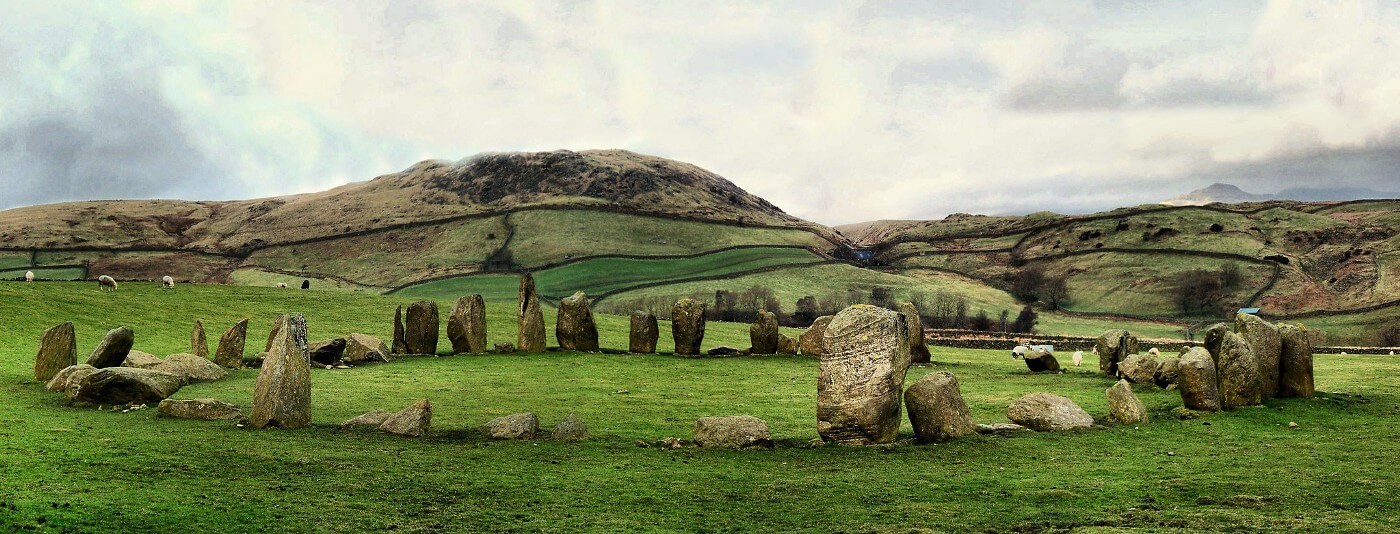
Swinside Stone Circle by Christina Rose Howker on Flickr (Creative Commons)
Stone Circles Infect Your Dreams
It should be noted that this practice of special dreaming at sacred sites- seeking out messages from the gods or spirits- is not unique.
The Ancient Greeks had a religious practice of sleeping in a sacred place. This was called incubation or more simply ‘Temple Sleep’. The most famous sites in Greece for incubation were at Epidaurus, Cos, and Athens where the ruins of the temples can still be seen. A sleeper lay down in a dormitory called an abaton and was visited in their sleep by the god Asclepius to give the dreamer advice on the problem they had gone there to consult on.
There was a similar practice in Ancient Egypt where would-be dreamers would go to the temples of Imhotep. Both Asklepios and Imhotep were healer gods, and as well as advice, full-blown cures could be achieved by sleeping in their temples.
There is a papyrus from Ancient Egypt called ‘The Dream Book’ and in it, there are directions for sacred dreaming and how to protect yourself from evil spirits.
Make a drawing of Besa on your left hand and enveloping your hand in a strip of black cloth that has been consecrated to Isis (and) lie down to sleep without speaking a word, even in answer to a question. Wind the remainder of the cloth around your neck… [and say] come in this very night.
In North America, the Native American people would use caves and hilltops. In the North African deserts, the Berbers used tombs.
See more on Dream Incubation in the Ancient World here.
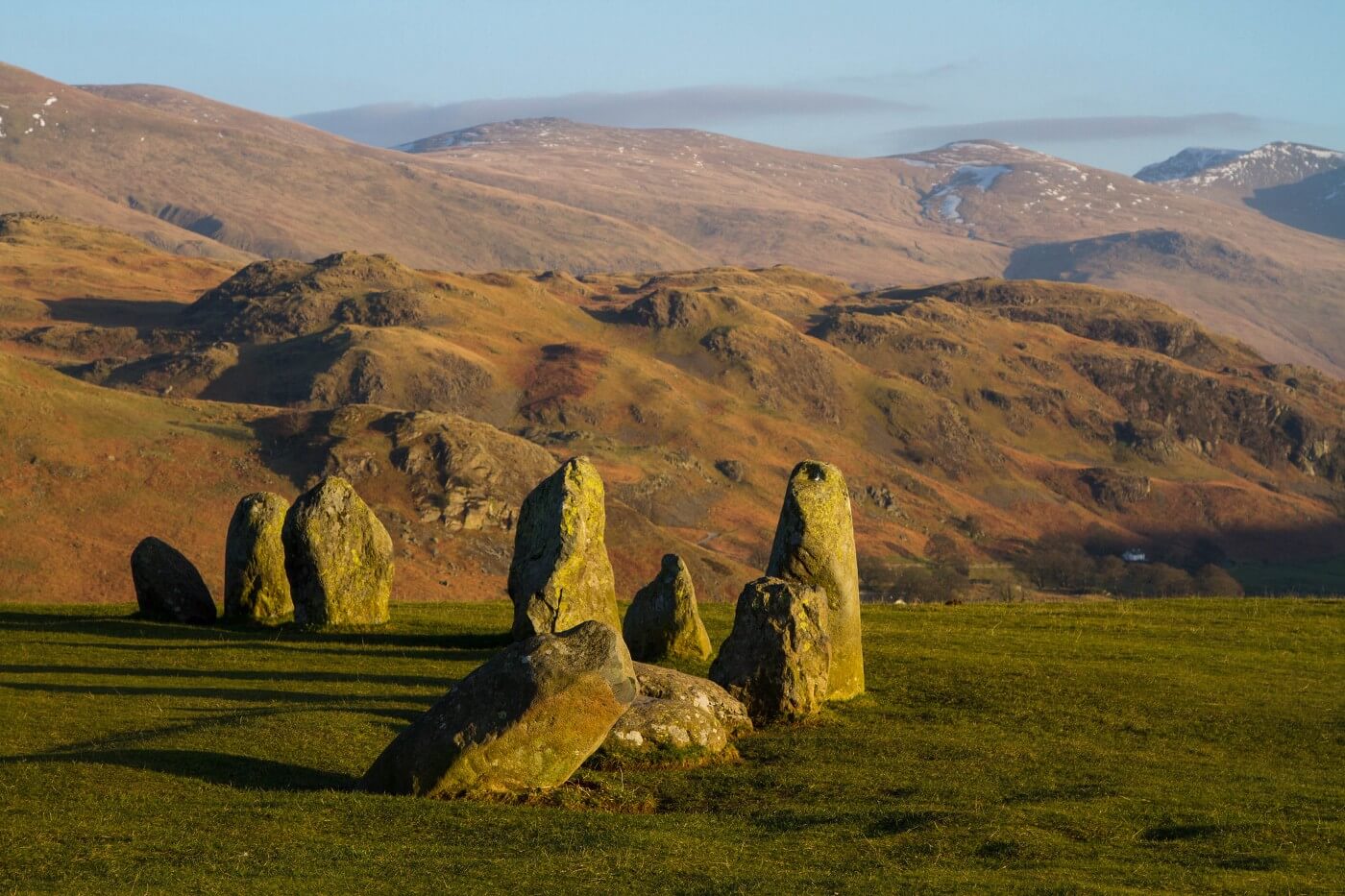
Castlerigg Stone Circle by S9–4PR on Flickr (Creative Commons)
Timeslips at Stone Circles
I am quite interested in timeslips, see my first and second articles devoted to this subject.
The Dragon Project personnel noted timeslip-like phenomena at the Rollright Stones. These happened so often that they nicknamed the lane beside the stones ‘Spook Road.’
On one occasion, one of the Dragon Project team saw a car with two people in it suddenly blink out and disappear and never come back.
Another time, a scientist saw a giant dog-like creature materialize next to the Rollrights. I think he ran away.
A year and a half after the dog, a team member saw an old-fashioned, horse-drawn gypsy caravan come into existence for a few moments, then vanish as suddenly as it had appeared.
The sections of the road where these visions appeared are significantly more radioactive than other stretches.
A guy calling himself RogueHealer recounts an anecdote that happened to him at the Rollright Stones. It was night, around 11 PM in the early 1990s.
You can read it here, but in summary, he was driving along the road by the Rollrights, a route he knew well, but the journey was extended and slow as if time was stretched out.
RogueHealer says local people report not being able to find the stones, even though they know well where they should be, and end up wandering around lost.
Many stone circles have become the focus of folklore and legends. For example, it is said that you can never count the Rollright Stones twice and get the same number.
At Long Meg and Her Daughters in Cumbria Local, tales say that Long Meg and her Daughters were turned to stone for dancing on a Sunday, or alternatively, that the outer stones were men trying to enchant Meg so that she would give herself to them. As a punishment, everyone, including poor Meg, was turned to stone, which seems unfair.
There are weird things that happen at Long Meg. In the early 1990s, a local girl called Paula Thompson and her friends decided to do a bit of ghost hunting there.
Her friends told her that they had gone in their cars late at night to sit and talk and do what teenagers do. They said they saw flashes of light outside the vehicle, coming from the stone circles. This intrigued Paula and they decided to go together the next night.
She told me it was late, after midnight, and at first, Paula wouldn’t get out of her car. Her friends teased her, and so, reluctantly she opened the door. By that time, the others had spread out around the circle.
There was some light from the moon, and so she walked over to Long Meg, the tallest stone. She saw a dark shape in front of her. As she got closer, this shadowy figure darted towards her very quickly.
Paula thought it was a male friend having a laugh and called out jokingly for him to stop. He didn’t stop, and she saw that he was going to run into her. As it got closer, she saw the shape wasn’t her friend. To her horror, it ran right through her. She says she felt cold and frightened and rushed back to the car.

Urgah Stone Circle by John Finn on Flickr (Creative Commons)
Conclusion: The Dragon Project is Done
The Dragon Project was a fantastically innovative project that ultimately raised more questions than it solved. We still don’t definitively know that the stone circles give off strange energies. They do give off radiation, magnetism, and ultrasound, but there’s nothing to suggest that this has anything other than a geological cause.
The results of the dreamworking were not really compelling. Though I must admit, I’d like to spend a night at one of these sites just to see.
Some say the stone circles are used as landing-beacons for alien craft. But that’s another story altogether.
If you like what I write about, check out my other articles!
Keep in touch.
